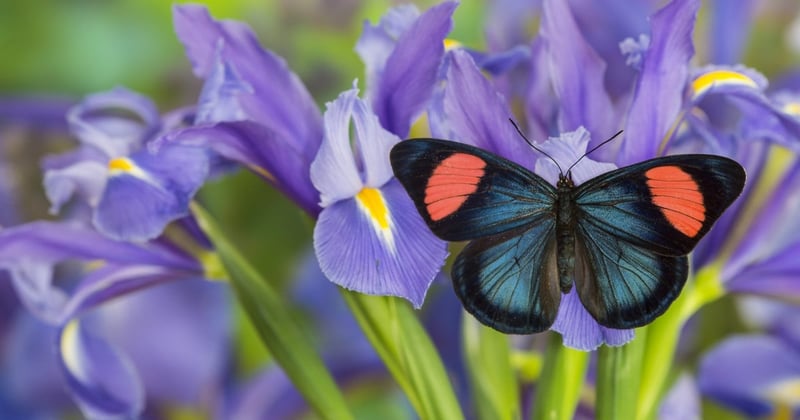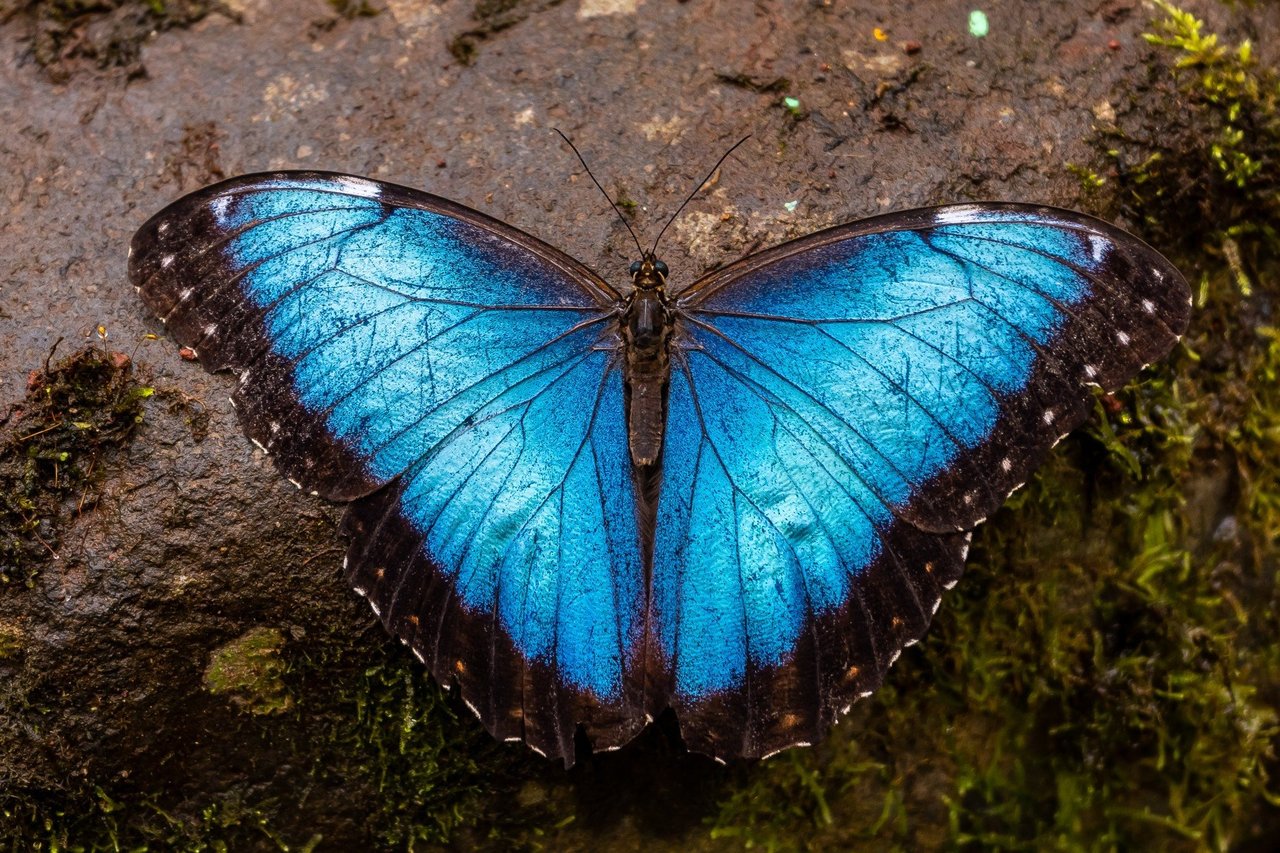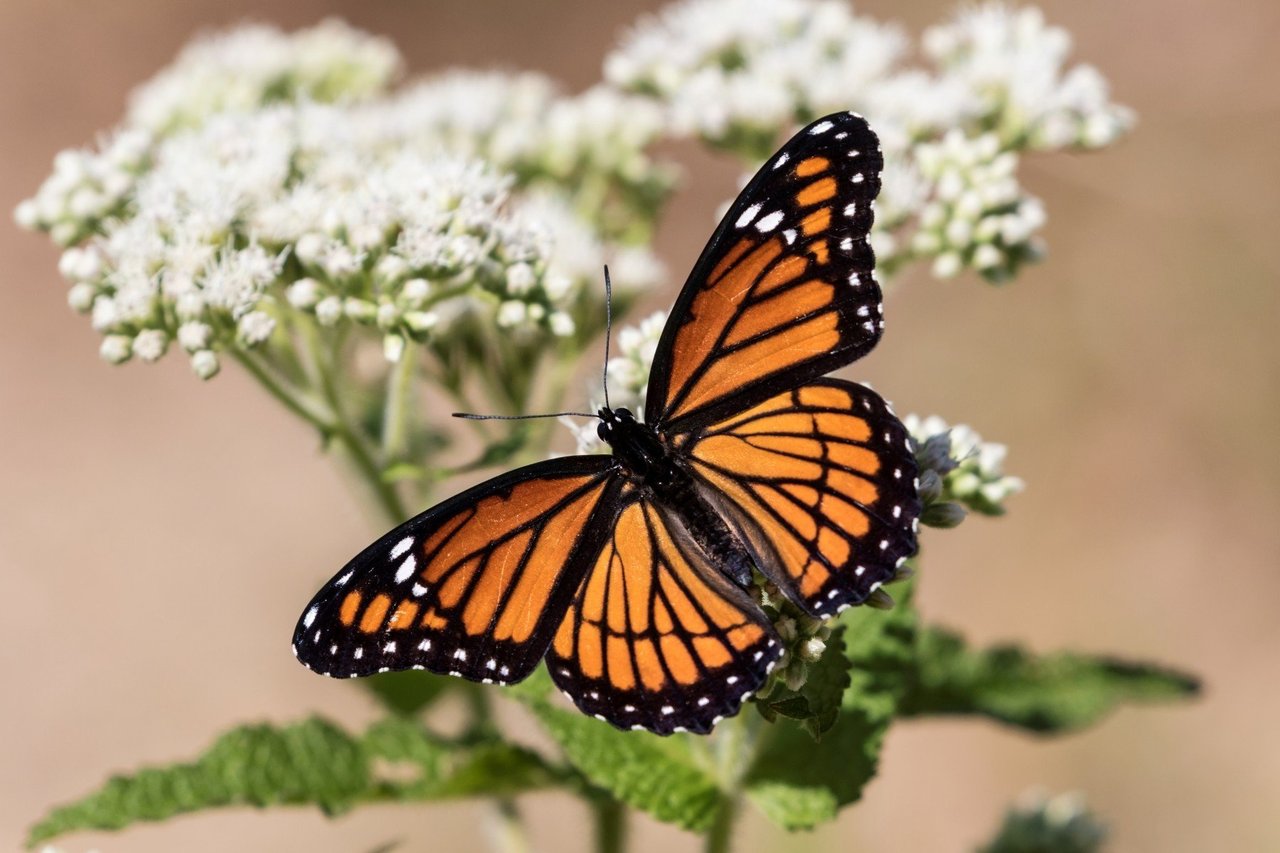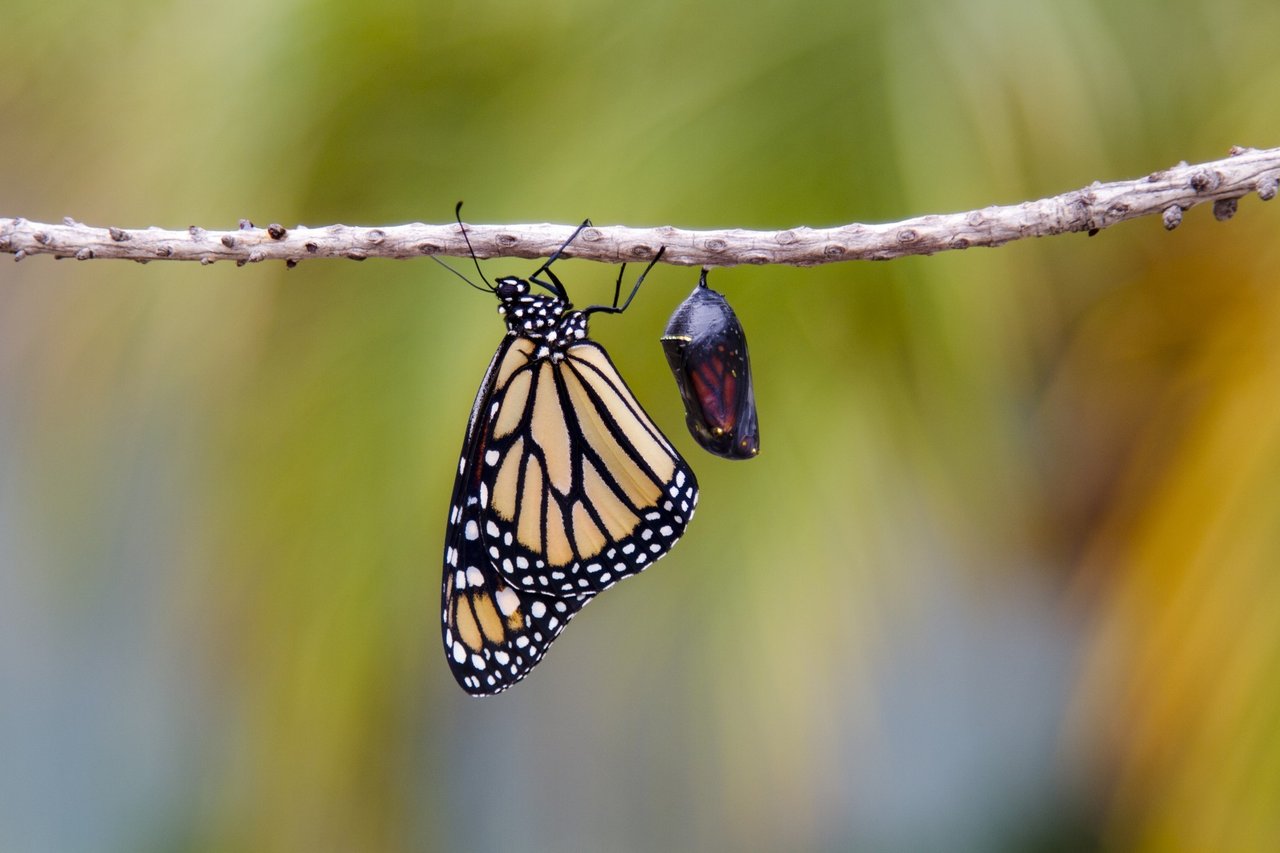
Discover nine facts about our fluttering friends.
Let’s put on hold the question of the chicken and the egg—what we really want to know is which came first: the flower or the butterfly? You may be surprised to learn that butterflies first appeared before flowering plants about 200 million years ago. With a lineage so long, these beautiful animals are full of surprises. To celebrate National Learn About Butterflies Day, read on for nine fascinating facts about butterflies.
1. Butterflies’ wings follow two distinct color forms.
These forms, called pigment and structural, can be found alone or in combination on a butterfly’s wings. True to its name, pigment colors tend to be bright and inky, remaining definite regardless of the amount of light present. Structural colors tend to shift with the light, producing a "rainbow" or iridescent effect. An example of structurally colored wings can be found on the morpho butterfly.
The morpho butterfly has a combination of both pigment (black) and structural (blue) coloring.
2. Only about 4% of the world’s species of butterflies are found in the US.
Despite the 17,500 species of butterflies that currently exist, only about 750 of those live in the US, with the most abundant being the cabbage white butterfly.
3. Butterflies have more to them than meets (our) eye.
Did you know that butterflies can see colors that we cannot? This is because they can perceive ultraviolet light, which is outside the scope of our visual capabilities. Additionally, many butterflies’ wings include these “unknown” ultraviolet colors to attract mates.
4. Butterflies perform mimicry to better protect themselves from predators.
Take a look at the photo of a monarch butterfly below—now look again, because it’s actually the cunning viceroy butterfly posing as a monarch! It was originally thought that, like other wild animals who perform mimicry, viceroy butterflies “transform” into monarchs for protection against predators (the monarch’s bright colors indicate that it is toxic to birds, a common predator). However, viceroys are also naturally toxic, so this mutual mimicry ultimately proves beneficial to both species of butterflies.
5. Butterflies drink... turtle tears?
An incredible video of butterflies in the Peruvian Amazon shows them drinking the tears of turtles. Although it sounds like something out of a fairytale, butterflies actually have a practical reason for this behavior: sodium. Because butterflies cannot obtain sodium from their usual diet of floral nectar, they must search for sodium elsewhere; this could be in feces, dirt, and yes—turtle tears.
6. Butterflies’ pollinating capabilities are even more crucial to ecosystems than you may think.
We know that bees are excellent pollinators, but butterflies are pretty impressive sidekicks. This is partly because butterflies pollinate cotton flowers, a part of the cotton plant that bees naturally do not frequent, thus boosting cotton harvest. This type of pollination—where multiple insects work to pollinate different portions of the same plant—is called pollination complementarity, and it occurs with other plants too, like almonds.
7. Most adult butterflies only live for 1-2 weeks.
The life span of an adult butterfly is particularly short, but the growth process beforehand can be much longer. Comprised of four stages: egg, larva (caterpillar), pupa (chrysalis), and finally adult butterfly, the complete life cycle of a butterfly from egg to adulthood can last anywhere from 30 days to multiple years.
A fully formed adult butterfly next to a pupa (right).
8. Monarch butterflies migrate as far as 3,000 miles.
Signaled by the cooler weather and shorter days, monarch butterflies from the northern US and Canada begin their journey towards Mexico in search of warmer weather. Alternatively, monarchs from across the western region of the US migrate to the coast of California for the winter and then once again scatter amongst other western states when spring arrives.
9. Butterflies, among other wild animals, are harmed by factory farming.
When new factory farms are built, large swaths of land—butterflies’ habitats and food sources—are destroyed. This land is used to grow corn and soy to feed farmed animals. Further, a toxic pesticide applied to these crops, called glyphosate, is upsetting monarch butterflies’ migratory patterns and driving them toward extinction. This past winter, only 1,914 monarchs were recorded overwintering on the California coast — the lowest number ever recorded, down from 30,000 last year and 1.2 million just two decades ago.
Butterflies aren’t the only wild animals negatively affected by factory farming. Learn more about factory farming’s insidious impact on wild animals.


